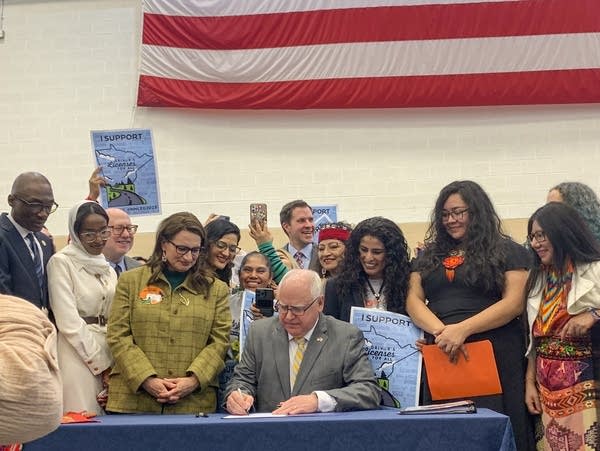Spanish-language tests spiked since passage of Driver’s License for All law

Gov. Tim Walz, prepares to sign the bill that allows people to get driver's licenses regardless of their immigration status on March 7, 2023.
Dana Ferguson | MPR News
Go Deeper.
Create an account or log in to save stories.
Like this?
Thanks for liking this story! We have added it to a list of your favorite stories.


